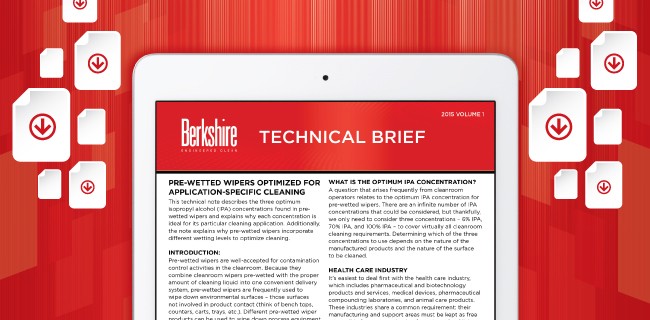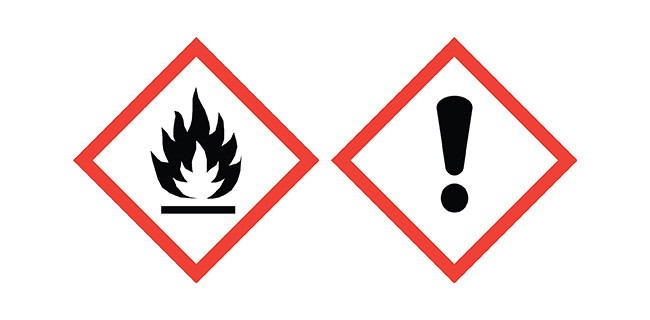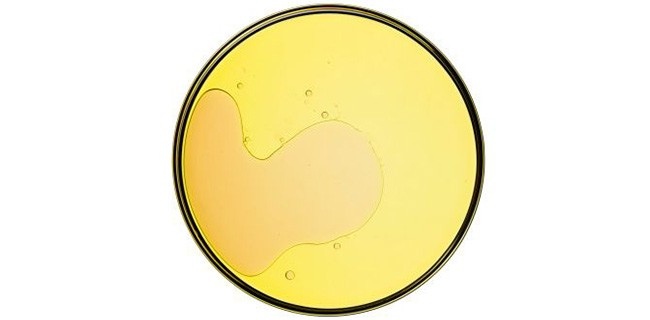HERE’S A LOOK at the three optimum isopropyl alcohol (IPA) concentrations found in pre-wetted cleanroom wipers. What is the Optimum IPA Concentration based on your specific application? This Technical Brief presents an overview of: Cleaning liquids: Isopropyl alcohol (IPA) Flammability ratings Transportation and storage concerns Healthcare vs. Microelectronics cleaning applications Volatile Organic Carbons (VOCs) Thank you [Read More…]
Tag Archives: Microelectronics
The Issue Of Ion Contamination In Electronics Manufacturing Processes Is Of Critical Importance. Therefore It Is Incumbent On Manufacturers To Be Vigilant In Detecting And Minimizing Ionic Contamination. By Howard Siegerman, Ph.D BIG PROBLEMS WITH SMALL IONS THE ISSUE OF ION CONTAMINATION in microelectronics is of critical importance because electronic device failures have been directly linked [Read More…]
ISOPROPYL ALCOHOL (IPA) is widely accepted as a good liquid for keeping cleanroom surfaces in pristine condition. But what about methyl, ethyl, or butyl alcohol? Why aren’t these types of alcohols considered for cleanroom cleaning, too? It all comes down to performance, safety, and price. Methyl Alcohol And Evaporation At room temperature, methyl alcohol has three [Read More…]
YOU CAN BUY SOLVENTS like acetone and turpentine from a hardware store, but you really shouldn’t. Solvents sold in the hardware store are not refined to the level required for cleanroom cleaning. When applied to surfaces, the hardware store variety of solvents will leave visible residues behind after they have evaporated. Cleaning With Acetone Or Turpentine [Read More…]
CLEANROOM SOPs cover everything from gowning and hygiene to allowable materials and maintenance. An audit can ensure conformance to those standards. Conformance Auditing Basics This Technical Brief presents an overview of: Standard operating procedures (SOPs). SOP auditing benefits and limitations. Preparation and execution of a conformance audit. Cleanroom maintenance. Proper wiping techniques.
QUATERNARY AMMONIUM SALTS are sometimes called “quats.” Low concentrations of quats (sometimes called “low quats”) are used in water as disinfecting agents. When it comes to contamination control, some terminology can be confusing. Let’s clear something up: A “quat” is the abbreviation for a class of chemicals known as quaternary ammonium salts. Low concentrations of quats [Read More…]
WHEN IT COMES to choosing the most appropriate solvent for removing soils from surfaces, it’s important to remember opposites don’t always attract. On the contrary, the optimum solvent for cleaning relies on the principle “like dissolves like”. Like Dissolves Like Select a polar solvent, such as water, to dissolve polar residues, such as salts. Select a [Read More…]
YOU MAY KNOW that polar solvents, such as water, are used to remove polar soils, such as salts, from surfaces. You may also know non-polar solvents, like hexane, remove oils and greases. But what about removing mixed residues, made up of both types of soils? Avoid ‘Mixed Results’ With A Miscible Mixed Solvent When it comes [Read More…]



























